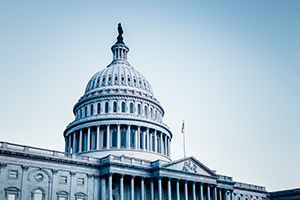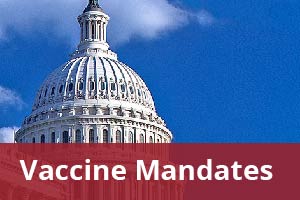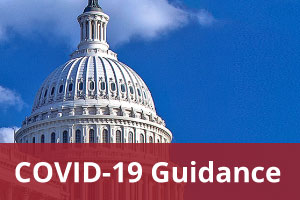by CUPA-HR | January 10, 2022
On December 10, the Biden administration issued the Fall 2021 Unified Agenda of Regulatory and Deregulatory Actions (Regulatory Agenda), providing the public with insights on what various federal agencies expect to work on in terms of regulatory activity in the near- and long-term.
In an effort to keep members apprised of upcoming noteworthy regulatory actions, CUPA-HR has read through the Regulatory Agenda and has flagged the following proposed activity:
Department of Labor
Wage and Hour Division — Defining and Delimiting the Exemptions for Executive, Administrative, Professional, Outside Sales and Computer Employees
In April 2022, the Department of Labor (DOL)’s Wage and Hour Division plans to issue a Notice of Proposed Rulemaking (NPRM) addressing overtime pay requirements for certain “white-collar” employees, including executive, administrative, and professional employees, currently exempt from the requirements under the Fair Labor Standards Act (FLSA). According to the Regulatory Agenda, one of the goals of the NPRM would be “to update the salary level requirement of the section 13(a)(1) exemption [under the FLSA].”
Changes to overtime pay requirements have been implemented through regulations under both the Obama and Trump administrations. In May 2016, the Obama administration’s DOL issued a final rule increasing the salary threshold from $23,660 to $47,476 per year and imposed automatic updates to the threshold every three years. However, court challenges prevented the rule from taking effect and it was permanently enjoined in September 2017. After the Trump administration started the rulemaking process anew, in September 2019, DOL issued a new final rule raising the minimum salary level required for exemption from $23,660 annually to $35,568 annually. This final rule went into effect January 1, 2020, and it remains in effect today.
DOL’s Statement of Regulatory Priorities, a component of the fall Regulatory Agenda that presents additional information about the most significant regulatory activities planned for the coming year, states that this proposed update will “ensure that middle class jobs pay middle class wages, extending important overtime pay protections to millions of workers and raising their pay.” Given this statement, it is likely that we will see the Biden administration’s DOL attempt to increase the salary level in the NPRM to something closer to the Obama administration’s proposed level, if not higher.
Employment and Training Administration — Strengthening Wage Protections for the Temporary and Permanent Employment of Certain Aliens in the United States
In March 2022, DOL’s Employment and Training Administration (ETA) plans to issue a NPRM to establish “a new wage methodology for setting prevailing wage levels for H-1B/H-1B1/E-3 and PERM programs consistent with the requirements of the Immigration and Nationality Act.” The proposal will likely amend the Trump administration’s final rule that was scheduled to take effect on November 14, 2022, but was subsequently vacated by a federal court in June 2021. The new proposal, which is included in the Department’s Statement of Regulatory Priorities will take into consideration the feedback it received in response to a Request for Information (RFI) on data and methods for determining prevailing wage levels “to ensure fair wages and strengthen protections for foreign and U.S. workers”.
CUPA-HR filed comments in opposition to the Trump administration’s regulations on the issue and in response to the Biden administration’s RFI.
Occupational Safety and Health Administration — Improve Tracking of Workplace Injuries and Illnesses
According to the Regulatory Agenda, the Biden administration’s Occupational Safety and Health Administration (OSHA) plans to release a NPRM to restore provisions of the May 2016 “Improve Tracking of Workplace Injuries and Illnesses” final rule. The Regulatory Agenda set December 2021 as the target date for release, but as of early January, the regulation is still pending review at the Office of Information and Regulatory Affairs.
The proposal seeks “to amend [OSHA’s] recordkeeping regulation to restore the requirement to electronically submit to OSHA information from the OSHA Form 300 (Log of Work-Related Injuries and Illnesses) and OSHA Form 301 (Injury and Illness Incident Report) for establishments that meet certain size and industry criteria.” In the Regulatory Agenda, OSHA notes that the current regulations only require electronic submissions from the OSHA Form 300A (Summary of Work-Related Injuries and Illnesses), as the Trump administration’s 2019 final rule rescinded the requirements to electronically submit the OSHA Form 300 and OSHA Form 301.
National Labor Relations Board
Joint Employer
In February 2022, the National Labor Relations Board (NLRB) is planning to release a NPRM to potentially amend the standard determining when two employers may be considered joint employers under the National Labor Relations Act. The new standard will revise the 2020 Trump Administration’s final rule, which reversed the Obama-era NLRB decision in the 2015 Browning-Ferris Industries case and established that an entity can only be a joint employer if it actually exercises control over the essential terms and conditions of another employer’s employees. While details of the Democratic-majority NLRB’s NPRM on joint employer status are up in the air, we would expect them to revise the current standard to look something more like the Obama-era decision.
Department of Education
Office for Civil Rights — Nondiscrimination on the Basis of Sex in Education Programs or Activities Receiving Federal Financial Assistance
In April 2022, the Department of Education is planning to release a NPRM to amend the “regulations implementing Title IX (…) consistent with the priorities of the Biden-Harris administration,” such as the priorities set forth in Executive Order (EO) 13988, “Preventing and Combating Discrimination on the Basis of Gender Identity and Sexual Orientation” and EO 14021, “Guaranteeing an Educational Environment Free from Discrimination on the Basis of Sex, Including Sexual Orientation and Gender Identity.” This NPRM will revise the amendments the Trump administration made through the 2020 Title IX final rule.
The Department of Education highlighted this new rulemaking in their Statement of Regulatory Priorities. The addition of the rulemaking to the priorities document and the accelerated expected release date of April 2022 from May 2022 as stated in the Spring 2021 Regulatory Agenda indicate that the agency is likely considering this as one of the top regulatory priorities above other proposed actions.
Department of Homeland Security
USCIS — Modernizing H-1B Requirements and Oversight and Providing Flexibility in the F-1 Program
According to the Regulatory Agenda, the Department of Homeland Security (DHS)’s United States Citizenship and Immigration Services (USCIS) plans to release a NPRM in May 2022 to “amend its regulations governing H-1B specialty occupation workers and F-1 students who are the beneficiaries of timely filed H-1B cap-subject petitions.” The NPRM will specifically propose to “revise the regulations relating to ‘employer-employee relationship’ and provide flexibility for start-up entrepreneurs; implement new requirements and guidelines for site visits including in connection with petitions filed by H-1B dependent employers whose basic business information cannot be validated through commercially available data; provide flexibility on the employment start date listed on the petition (in limited circumstances); address “cap-gap” issues; bolster the H-1B registration process to reduce the possibility of misuse and fraud in the H-1B registration system; and clarify the requirement that an amended or new petition be filed where there are material changes, including by streamlining notification requirements relating to certain worksite changes, among other provisions.”
ICE — Optional Alternative to the Physical Examination Associated With Employment Eligibility Verification (Form I-9)
According to the Regulatory Agenda, DHS is planning to issue a NPRM in June 2022 to “revise employment eligibility verification regulations to allow the Secretary to authorize alternative document examination procedures in certain circumstances or with respect to certain employers.”
Since the outset of the COVID-19 pandemic, DHS has provided temporary flexibility in the Form I-9 verification process to allow for remote inspection of Form I-9 documents in situations where employees work exclusively in a remote setting due to COVID-19-related precautions. While that guidance is only temporary, DHS issued a Request for Public Input (RPI) on October 26, 2021 to determine whether those flexibilities should be kept in place permanently. It is possible that DHS will use that feedback to develop and implement this NPRM.
CUPA-HR has engaged with DHS on the Form I-9 flexibilities through the pandemic. In December, CUPA-HR sent a letter to DHS requesting the Form I-9 flexibilities be extended past December 31, 2021. DHS announced soon after that the flexibilities would be extended until April 30, 2022. Additionally, CUPA-HR submitted comments in response to the RPI based on a recent survey detailing members’ experiences with the Form I-9 verification process flexibilities.
CUPA-HR will keep members apprised of these proposed regulations and others as they are introduced in the coming year.
Share This Article:





